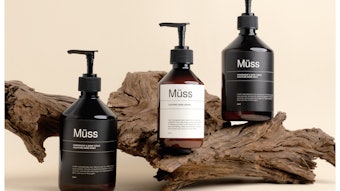
I know what you’re thinking: “A dietitian’s take on what to serve in a spa? Fruits and veggies, check! We’ve got that.” And while you are right, that’s just the beginning—the easy part. What will set your menu apart from others is creating an entire food experience that awakens all the senses, revolving around a concept called mindful eating. Mindful eating is rooted in the broader philosophy of mindfulness, a centuries-old practice in focusing on the present moment, bringing awareness to one’s thoughts, emotions and physical sensations. To eat mindfully is to tune into all the physical and emotional senses and cues around mealtime, enjoying the food and eating experience more fully without judgment.
Log in to view the full article
I know what you’re thinking: “A dietitian’s take on what to serve in a spa? Fruits and veggies, check! We’ve got that.” And while you are right, that’s just the beginning—the easy part. What will set your menu apart from others is creating an entire food experience that awakens all the senses, revolving around a concept called mindful eating. Mindful eating is rooted in the broader philosophy of mindfulness, a centuries-old practice in focusing on the present moment, bringing awareness to one’s thoughts, emotions and physical sensations. To eat mindfully is to tune into all the physical and emotional senses and cues around mealtime, enjoying the food and eating experience more fully without judgment.
How can this unfold in the spa setting? A mindful eating experience:
- Starts with a calm atmosphere without distraction.
- Considers the wider spectrum of the meal, including where foods came from, environmental impacts and how they are prepared.
- Encourages a full sensory experience.
- Acknowledges how the body feels after eating.
- Expresses appreciation for the nourishment.
- Can include breathwork or meditation before, during and after the meal.
Doesn’t this sound like the ultimate spa treatment translated into mealtime? Regardless of how simple or elaborate your spa’s food offerings are, there are ways to incorporate this philosophy into your current setup. These four tips will get you started.
1. Set the mood. Atmosphere is everything in a spa, and the space where people eat is no exception. Switch out run-of-the-mill plants with fragrant edible options like potted citrus trees, lavender or rosemary bushes. Ambient music, comfortable seating, natural lighting, calming food-related scents (like mint or lemon), and a focus on the details that any wellness space would have is also imperative. Encourage guests to ditch the phones and truly unplug. Ensure there are no TVs or other distractions, so that the attention is solely on the meal, allowing people to maximize the sensory experience.
2. Menu nutrient-dense whole foods … with a focus on plants that are locally and sustainably sourced when possible. Luckily, plant-forward meal plans continue to trend, so this will be an easy crowd pleaser. Don’t worry too much about the details, like which food has what nutrient. Simply take a step back and look at the ingredients and final plating. Are you presenting a rainbow of plant-forward offerings that includes whole grains, beans, legumes, nuts, seeds, vegetables and fruits? If the answer is yes, then you can rest assured that you’re serving nutrient-dense options. Local and sustainably sourced foods are also incredibly important to today’s consumers, so be sure to menu this as much as possible—and also tell the story of the farm, the farmers and the social and environmental impacts of the food selections you have curated for your guests.
Does it need to be non-GMO, clean and organic? Although these are all trending buzz words, they are not necessarily superior. GMO (genetically modified organisms) are crops that have had their DNA modified in some way. There are countless international organizations that monitor the safety and human and global health impacts of genetic modification, and all share the same consensus that it’s completely safe to consume. In fact, this process creates a hardier plant using fewer resources, which is more nutrient dense with a higher crop yield.
When it comes to clean foods, there is no evidence-based definition, industry consensus or rules around the term. Food marketers came up with it to entice those looking to avoid refined or processed foods, artificial ingredients and certain preservatives or additives. Further, conventional produce is just as nutrient dense and safe as organic. We know this because the U.S. Department of Agriculture’s Pesticide Data Program routinely tests for pesticides on both conventional and organic produce (yes, organic farming can use pesticides) to ensure they are safe to eat over a long period of time, and their findings are publicly available.
All this being said, your guests may have strong feelings on these terms, which leaves you with two options. Play into the trends and offer food that is non-GMO, clean and organic. Again, there is nothing wrong with them; they’re safe and healthy, just more expensive. Or, pivot and focus your story on what’s truly important and impactful: nutrient density and the social and environmental impacts of choosing local and sustainable. There is a unique and beautiful story there that people will appreciate.
3. Ignite the senses. Mindful eating is a practice in blocking out distractions and turning on not just the taste sensation, but also sight, smell, touch and feel. If we start with sight and no distractions, we can more fully appreciate the variety, depth and vibrance of colors. Bringing the food to the mouth, we then incorporate smell and more acutely recognize individual ingredients like the sweet aroma of pineapple, the fresh cool scent of mint, even the subtle spiciness of black pepper that tickles the nose (now adding in the sensation of touch). Next, we bring the food to the mouth and fully enjoy different textures on the tongue, becoming aware of creamy, crunchy and chewy.
It’s hard to pick up on these subtleties when you’re busy scrolling through social media or watching the news, but when that noise is gone, the food speaks up in some very incredible ways. It can be the ultimate sensory experience. Isn’t that the essence of spa?
4. Communicate the goals. Much of this is not common knowledge for most people; consumers are more likely to plow through mealtime while multitasking, so to say it’s hard to switch gears is an understatement. Guests will need support, cues, tips and guidance.
Maybe there is some signage as guests walk into the eating space, or staff can explain mindful eating each time. Perhaps the mindful mealtime experience is offered as a guided class, just like yoga or meditation. This is where you can lead guests through the sensory experience, complete with tips on acknowledging how the body feels after eating, expressing gratitude for the nourishment, and practicing deep breathing or meditation around the meal.
Think through your current menu, what’s available locally, your food space, its capabilities and your clientele. How can you make your meal offerings a stand-alone treatment? How can you create a space to encourage mindfulness through literally nourishing the body?
Ultimately, the practice of quieting the world around us so that we can more fully awaken the senses and be present better equips us as we go out into the world to live in the moment with more joy and appreciation. Creating mindful eating experiences for your guests is a great way to help them do just that.
Leigh-Anne Wooten, MS, RDN/LDN, FAND, is the founder and chief nutrition officer of Behind the Label, LLC (www.behindthelabel.biz). She has a master’s degree in nutrition science and is a Fellow of the Academy of Nutrition and Dietetics. Wooten is now an executive advisor and consultant who supports overall concept design, recipe and menu development for spas and other companies. She’s also a mom of two toddler sous chefs.










